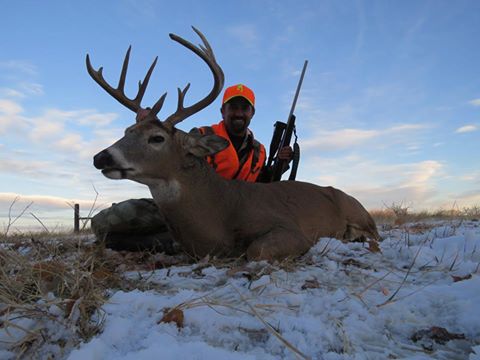
Contents
Aaron Warbritton on Hunting the Rut on Public Land
The most important factor affecting whitetail rutting activity is hunting pressure. This is especially true on busy public lands or pressured private lands. Deer do not change their rut timing due to hunting pressure, but they do adapt to avoid hunters, even during the rut.
Aaron Warbritton and The Hunting Public crew have extensive experience hunting public ground in various states. They have developed strategies and learned valuable lessons that can benefit any deer hunter on pressured land. You can listen to the full podcast interview with Warbritton below.
The Last Week of October Matters
While the first and second weeks of November are popular for hunting due to hot rut activity, they also bring increased hunting pressure. That’s why the last week of October is the THP crew’s favorite time to hunt, as there is less pressure.
Hunting pressure significantly impacts public land during the first week of November, as that’s when most hunters take their vacation. Despite the starting rut, deer experience a sudden influx of hunters they haven’t seen in months.
Late October is when bucks become more active but still don’t travel long distances. This means that scouting and trail cam data from earlier in the month is still relevant. Once the rut intensifies and hunting pressure increases, the deer behavior witnessed in mid-October changes.
Locating Rut Activity Pockets
Regardless of when you hunt, finding key areas where deer funnel to avoid hunters is crucial. Bucks will still chase and breed does, but they tend to avoid heavily hunted open hardwoods areas.
Warbritton focuses on patterning other hunters, not just deer movement. He believes that if an area is devoid of human presence, that’s where the deer will be.
If an area is highly pressured, he might not immediately hunt there. Instead, he drives around to locate areas with no people. Those secluded or overlooked spots can turn into a rut frenzy.
Think of it this way: accessing a secluded or overlooked spot without alarming deer allows you to benefit from other hunters pushing deer towards you. This concentrates the deer in your hunting area.
Stay Mobile
Warbritton’s success in hunting public land deer relies on mobile hunting tactics and speed scouting. The key is to find areas with fresh buck sign without spooking the bucks too much.

Focus on scouting into the wind on windy days to learn the area, identify fresh sign, and locate optimal access routes. Around October 25th and 26th, you can find super fresh buck sign like scrapes and rubs.
Bumping a buck isn’t necessarily a bad thing. Gentle disturbances in a large public land tract can provide valuable information.
When you bump a deer, stop and crouch to conceal yourself. Observe where the buck goes and avoid bumping him a second time. This way, you’ll learn the buck’s preferred escape direction.
Utilize Scrapes Effectively
Although bucks commonly hit scrapes at night, it’s still worth paying attention to them. Warbritton often places cameras on easily spotted scrapes near trails or field edges to identify shooter bucks in the area. This helps him pinpoint likely bedding areas.
Digital mapping and scouting help him identify the probable bedding area, which could be 300 yards or half a mile away from the scrape, depending on the scenario. This information guides his hunting plans and camera placement.
Scrapes are advantageous for bowhunting because they force bucks to stop in a predictable location. Set up near a scrape close to your target area.
Overcoming Hunting Pressure
Finding a full parking lot of trucks in your hunting spot can be discouraging. However, a positive attitude is key. Maintain motivation, scout harder, and locate spots with fewer hunters. Remember the essence of deer hunting: enjoying the experience and getting away from everyday life.
Keeping a good perspective will keep you hunting harder and longer, even after a few unsuccessful hunts.
Focus on learning and gaining experience no matter where you hunt. If your favorite spot gets burned, you can rely on backup spots or explore new areas. Hunting pressure, in some ways, can be beneficial.
When hunting a large tract of public land, other hunters can help you identify likely spots. Go where they aren’t.
“The quickest way to get on deer is to look at the people and see what they’re doing.”

A skilled hunter, dedicated conservationist, and advocate for ethical practices. Respected in the hunting community, he balances human activity with environmental preservation.
